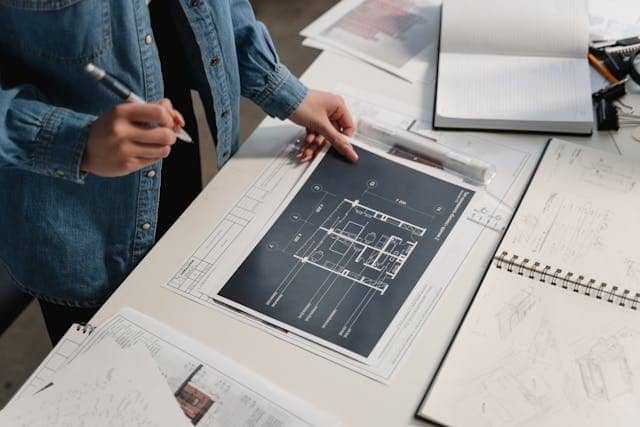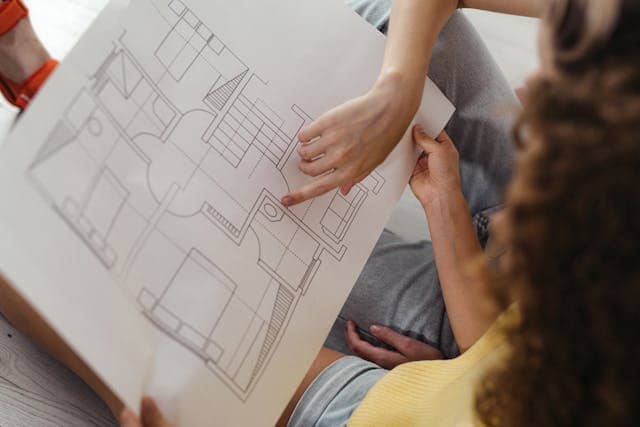Designing a home layout isn’t just about filling a space with furniture. It’s about creating a flow that works for your lifestyle while reflecting your taste. A home should feel comfortable, look good, and function effortlessly. Whether you’re building from scratch or reworking an existing space, the key lies in smart planning and thoughtful choices.
Start With Purpose
Every home has different needs. Think about how you use your space. Do you entertain often? Work from home? Have a large family? The layout should match your daily routines. For example, if you spend a lot of time in the kitchen, an open-plan kitchen-living area may suit you. If privacy is a priority, separated rooms might be better. Ask yourself: What’s essential for comfort and convenience? Your answers will guide the overall structure.
Focus on Flow
Good layouts feel natural. You should be able to move easily from one room to the next without awkward transitions. Avoid placing major rooms too far apart or creating dead zones. Ideally, high-traffic areas like kitchens, dining rooms, and living spaces should connect smoothly. Try to keep private zones, like bedrooms and offices, slightly removed from common areas. This provides a sense of retreat without total isolation. Hallways should be wide enough to feel open but not waste valuable square footage.

Make Space Work Harder
Every square meter in your home should have a clear use. If a room doesn’t serve a purpose, it can easily become cluttered. Think about multifunctional spaces. A guest room can double as a home office. An entryway can also offer storage. Pay attention to corners and awkward gaps. A built-in bench, floating shelves, or compact reading nook can turn wasted space into something useful and stylish. The goal is to ensure no part of your layout feels forgotten or underutilized.
Define Zones with Design
Style and function don’t need to compete. Use design to separate zones, even in open-concept spaces. Rugs, lighting, and furniture arrangement can define areas without needing walls. For example, pendant lights above a kitchen island distinguish it from the dining area. Color also helps guide the eye and add personality. A feature wall or contrasting material can set one zone apart from another while keeping the overall design cohesive. It’s a way to organize visually without breaking flow.
Prioritize Natural Light
Light affects how a space feels. The more natural light you bring in, the more inviting your home will be. Position living spaces where sunlight is strongest during the times you use them most. South-facing windows (in the Northern Hemisphere) bring in consistent light throughout the day. Use glass doors or interior windows to let light pass between rooms. If your space lacks windows, opt for light-colored walls and reflective surfaces to enhance brightness. This adds warmth and openness without extra construction.
Keep Style Cohesive
Function alone doesn’t make a home feel complete. A layout should also reflect your personality. Choose a consistent design language across the house. This doesn’t mean every room has to look the same, but there should be a visual link. Materials, color schemes, and textures should complement each other. For instance, using similar flooring across main areas helps the space feel unified. Layer your décor with intention, adding touches that make the space uniquely yours.
Adapt for Growth
Think long-term. Your current layout might work today, but what about in five or ten years? Leave room for flexibility. A nursery could become a study later. An extra lounge might serve as a media room down the line. Modular furniture and flexible storage can help you adapt without starting from scratch. This foresight adds value and saves time later. Planning for future needs ensures your layout stays functional as your life evolves.
In Conclusion
Creating a functional and stylish home layout takes planning, patience, and awareness. It’s about finding the right balance between purpose and personality. When done right, a layout supports your routine and showcases your style with the utmost ease. By focusing on flow, maximizing space, and choosing designs that suit your life, you can build a home that looks great and works even better. Whether modern, traditional, or something in between, the layout should feel like it was made just for you.





